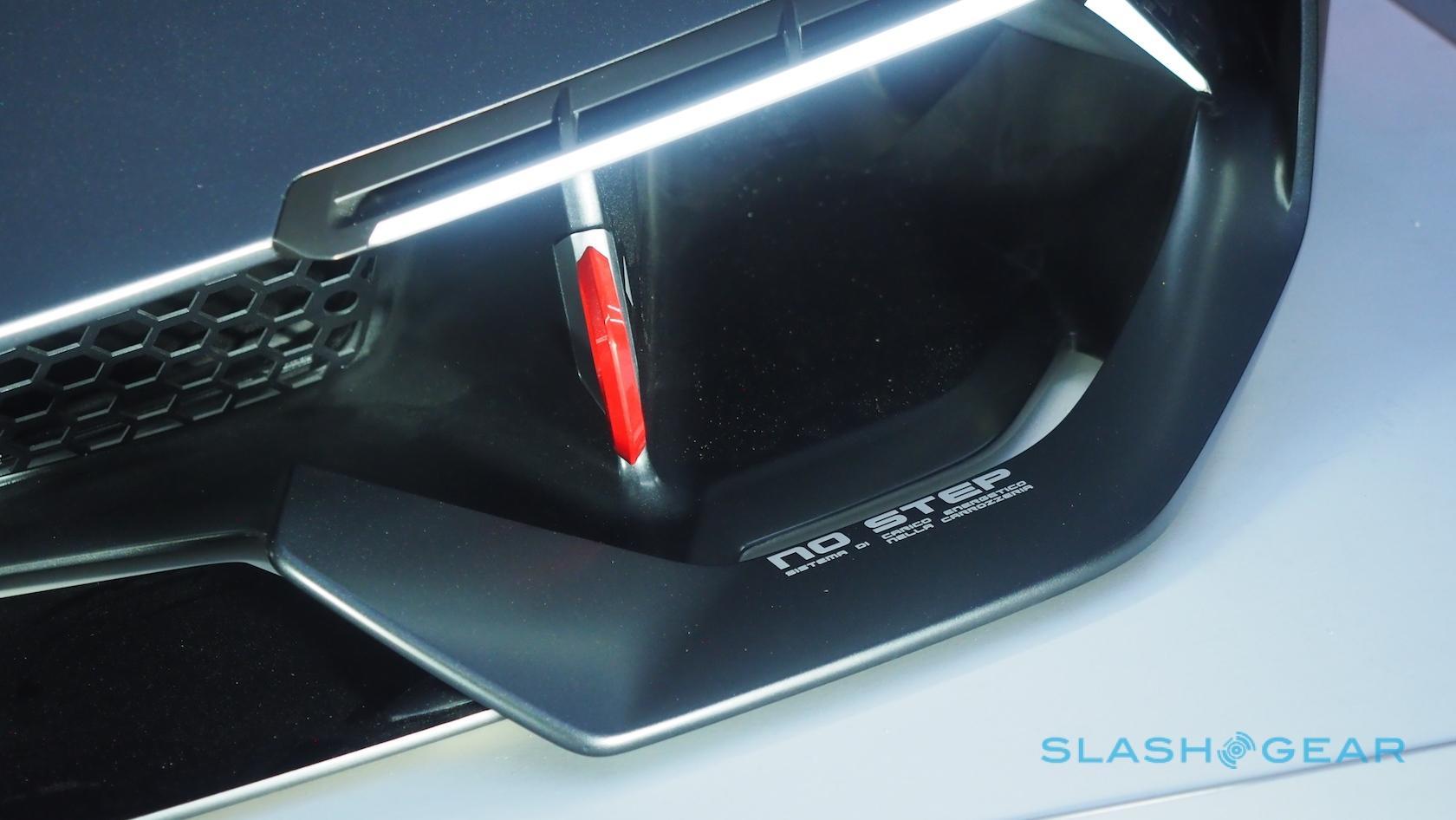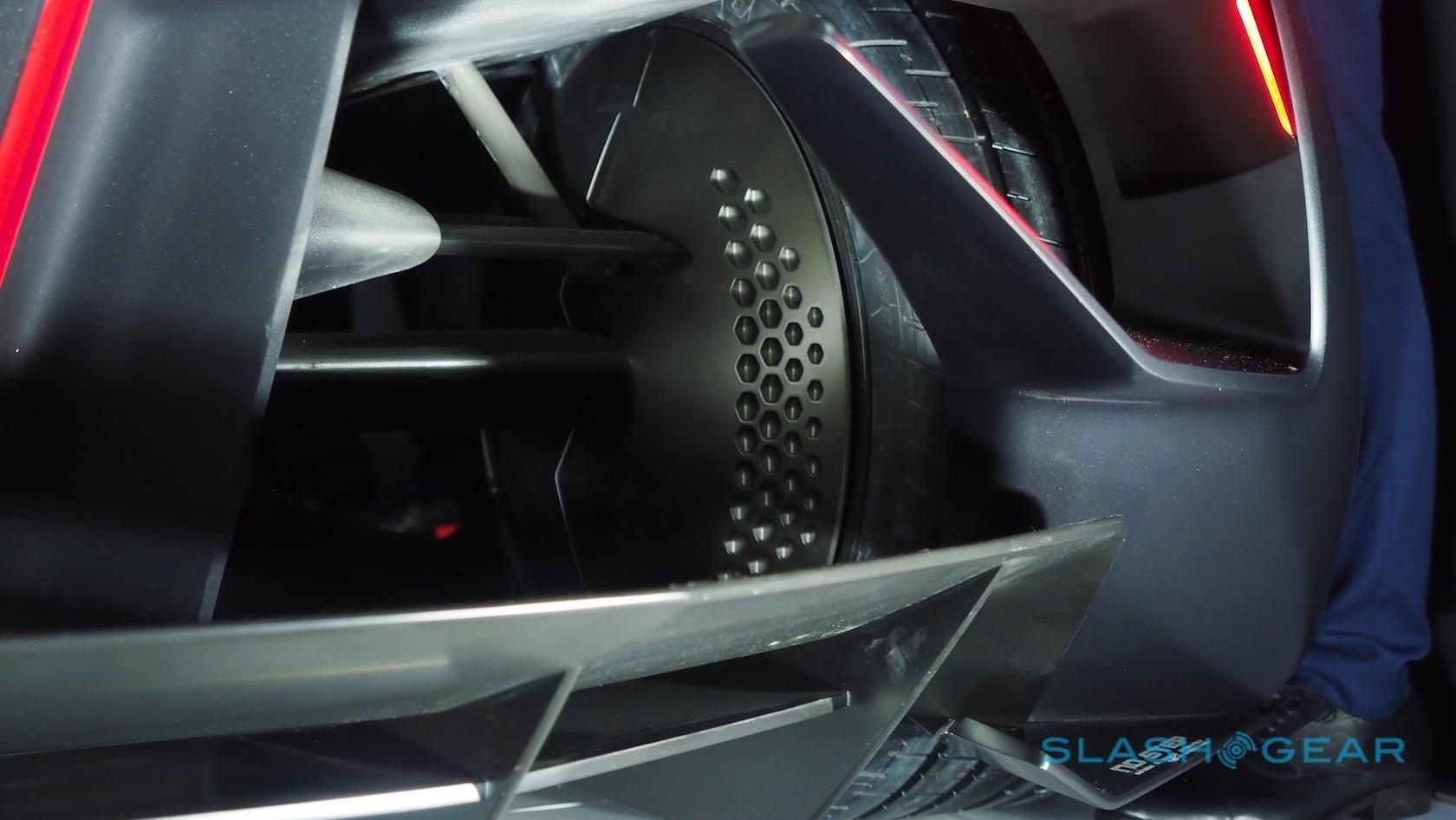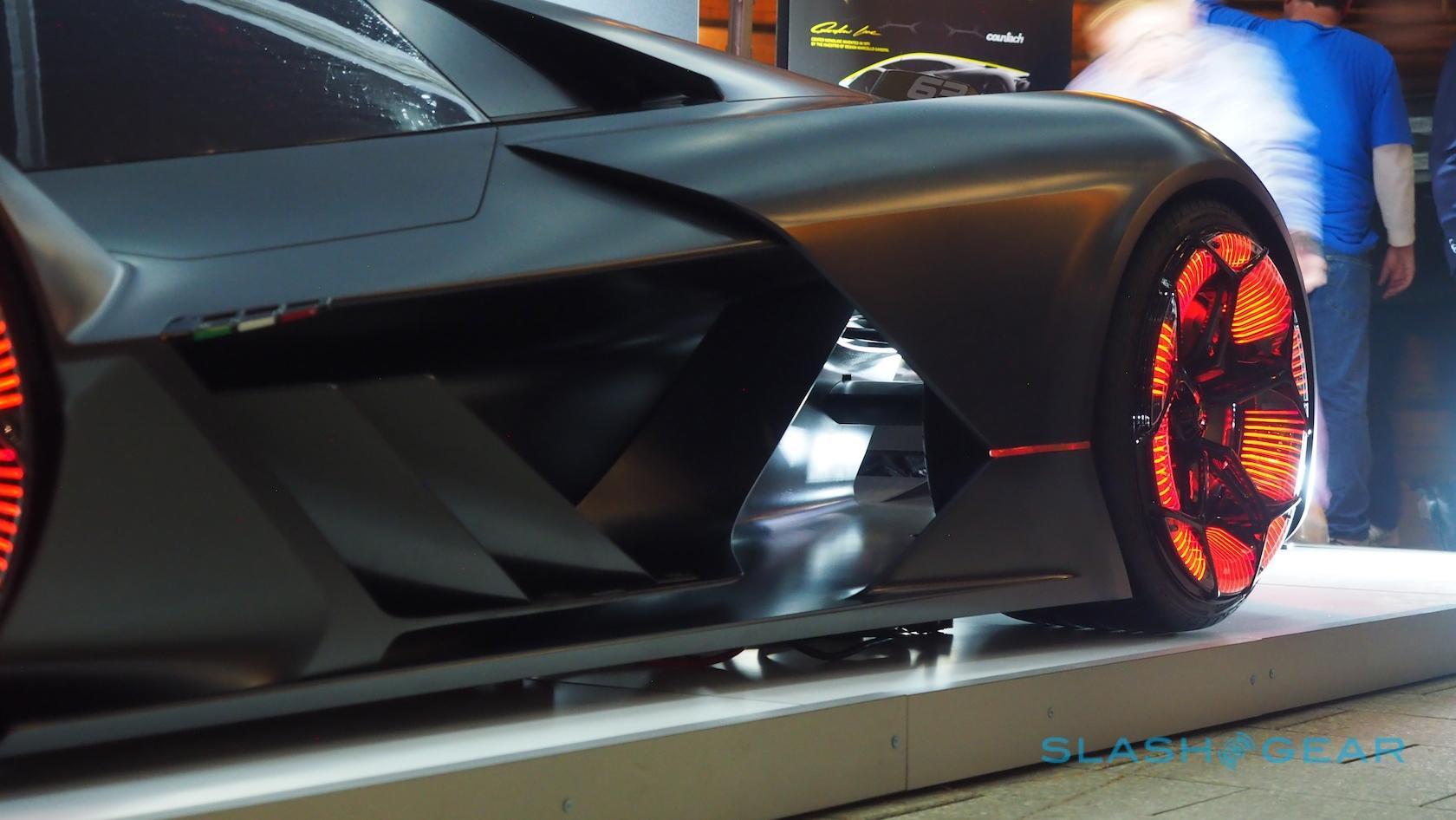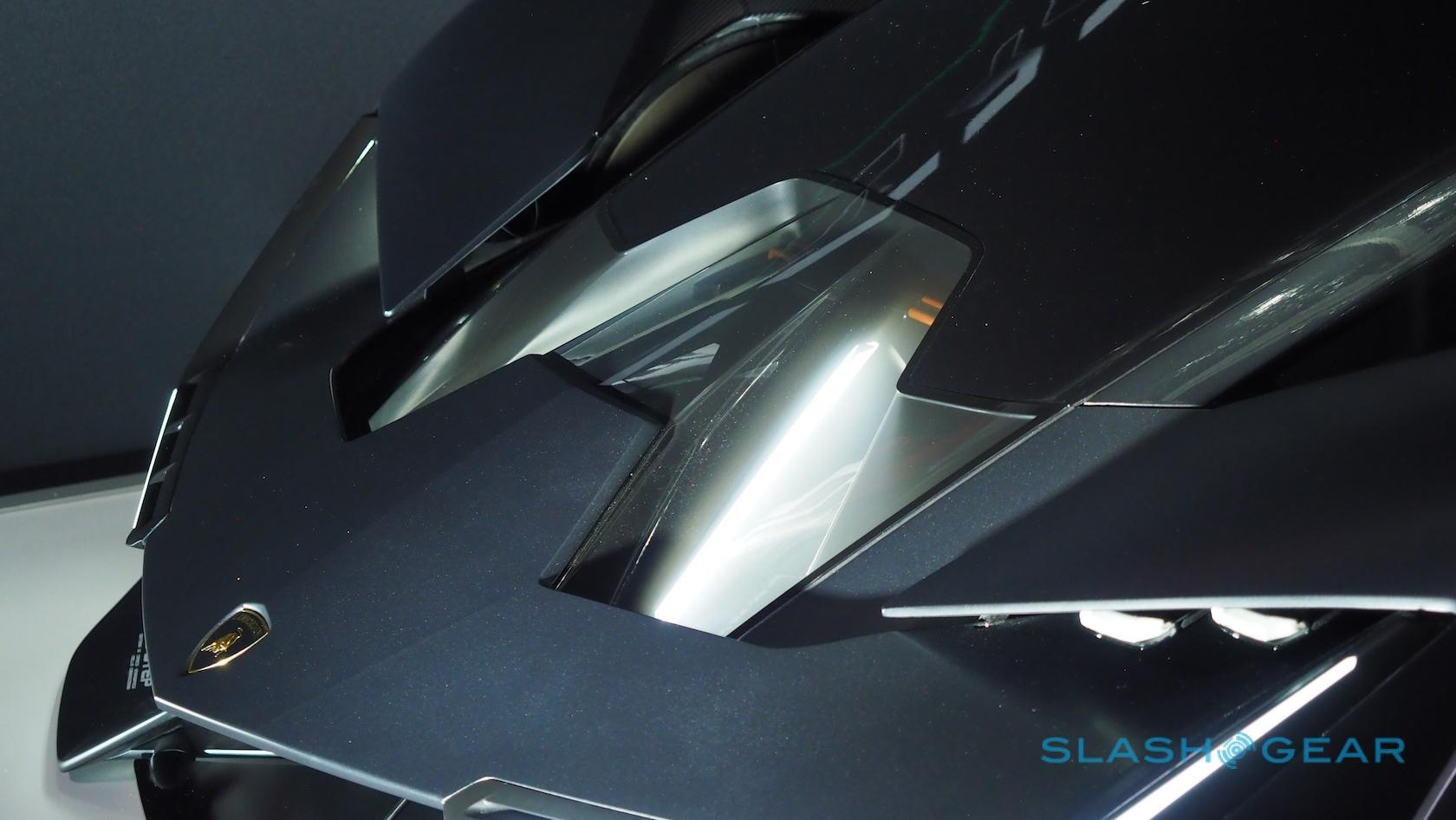5 Crazy Facts About Lamborghini's Outrageous Electric Supercar
Lamborghini may be embracing the electric car, but as you might expect the Terzo Millennio is about as far away from a Prius as you could imagine. The concept was revealed this week, as the famed Italian automaker begins collaborating with MIT on innovative super-capacitor batteries, bodywork that can store electricity, and carbon fiber monocoques capable of self-healing. Read on for five things that help make the Lamborghini Terzo Millennio special.
There's only one production part on the whole car
The Terzo Millennio's shared design DNA with existing Lamborghini models like the Aventador may be clear, but the vast majority of the concept is absolutely custom. Indeed, only one part – or, more accurately, set of four matching parts – is shares with production vehicles. They're the tires.
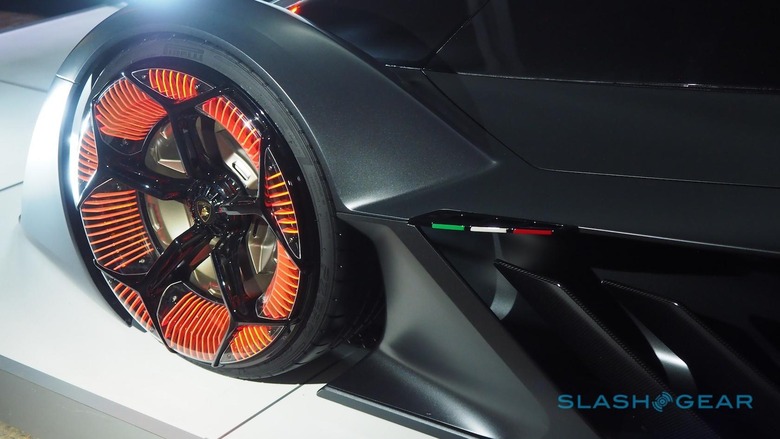
Still, while Lamborghini may have picked the Terzo Millennio's rubber off the shelf, it's still a pretty exclusive shelf we're talking about here. The tires are special Pirelli P Zero (355 25 21) models that are specially made for Lamborghini cars, and they're both vast and expensive. Over a foot wide but less than an inch thick, they wrap around the illuminated 21-inch wheels like a thinnest of sticky smears.
It took just three months to build
Lamborghini has some aggressive plans for its MIT collaboration, and the Terzo Millennio concept itself is just part of that. The company had the show car made in just three months, as the first fruits of a deal inked a year ago between it and the university. Next up is the really hard stuff, though.
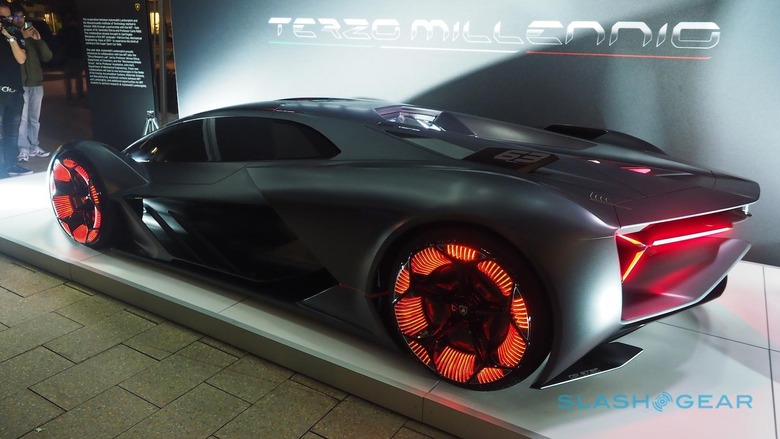
On the battery side, for instance, Lamborghini and the MIT labs have given themselves a year to figure out how to turn carbon-fiber nano tubes into the embedded anodes and cathodes that a battery would require, and then only two further years after that to develop that technology into a 3D shape capable of holding power. They won't be satisfied with theoretical success, either: the goal is a working design that could eventually be commercialized.
Charging speed, not total range, is the big goal
One of the biggest trends – and the focus of much investment and research – in electric cars currently is how to improve range. The limitations of battery technology mean the 300+ miles current production EVs offer is about as far as you can go right now on a single charge. That, Lamborghini argues, isn't the only approach that could work.
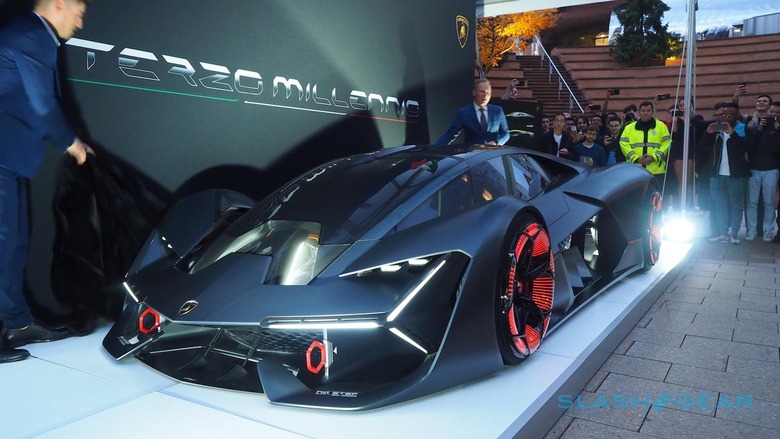
Extended range, the automaker points out, is valuable in an EV primarily because of the times involved in charging. What Lamborghini has in mind for the Terzo Millennio, however, is much, much faster recharges, taking advantage of the nature of super-capacitors and the fact that they support very rapid, very frequent charge cycles without exhibiting the same issues around battery aging as in traditional packs.
The result, it's suggested, could be a sports car that can do perhaps just 3-4 laps before the batteries are depleted. However, you could feasibly then recharge it in short order from the pit lane, and be back racing much more quickly than even a high-power Supercharger could rejuice a current Tesla.
Lamborghini has more to come... soon
Lamborghini's project with MIT is scheduled to last for the next three years, but we won't need to wait that long before we see more of the automaker's future vision of supercars. According to the Terzo Millennio's designer, Lamborghini plans to show the car again at CES 2018 in January, but not just the exterior. Instead, we'll finally get to see what's inside the aggressive concept.
Even with the electric motors shifted into the wheels themselves, cabin space is probably going to be tight. It's a two-seater, unsurprisingly, with adaptive seats that can adjust to suit driving style and conditions. Lamborghini isn't ready to give up on the thrill of taking the controls, either, and so a regular steering wheel and pedals are probably going to be in there too, albeit with suitably concept car styling.
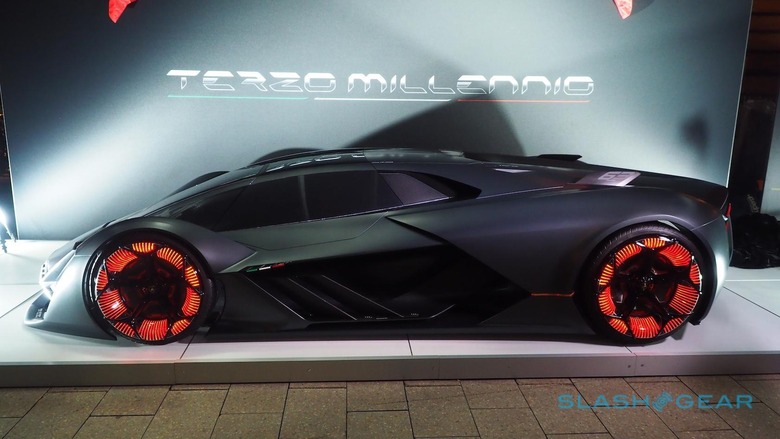
What will be particularly interesting is seeing how Lamborghini works its driver training system. That's the Italian firm's approach to the rise in autonomous driving: rather than having an AI take over from you, it'll instead train you to be a better driver. One possibility is a "ghost lap" from a professional, where the "perfect" lap is modeled first, and then the human driver can play chase as they try to emulate those lines.
Lamborghini's goal is not the auto industry's goal
When you're envisaging the next generation of super car for a very discriminating audience, you can't go the mass-market route. For Lamborghini, coaxing its current buyers out from the V10 and V12 vehicles that the company is known for is no small challenge. Still, though a zero-emissions vehicle might seem like the polar opposite from the automaker which brought us the Countach, according to Lamborghini is confident it can join the dots.
"What for us is important is that our customer is aware that we're not a follower, but we are an innovator," Maurizio Reggiani, chief technology officer at Lamborghini, says. "We are never sleeping on what we have today."
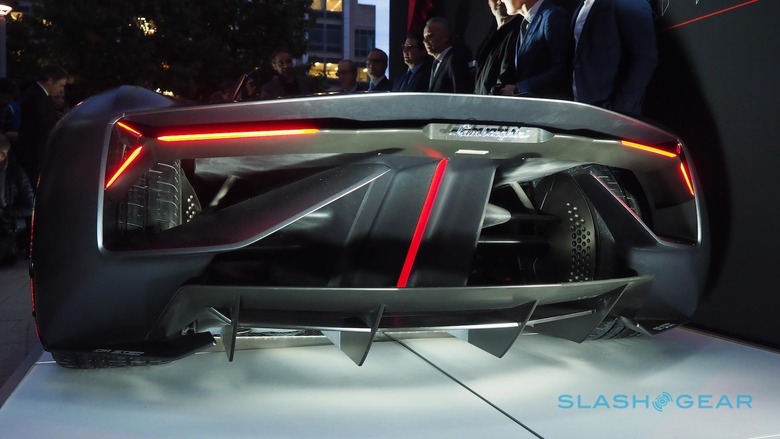
MORE This is Lamborghini's electric supercar
Central to that is the idea of emotion. "We have a DNA that is unique," Reggiani points out. "If we are not able to provide emotion to our customer, there is no reason to buy a super sports car, a Lamborghini."
"We cannot think to have a car without sound. We cannot think to have a car that is too heavy, in terms of agility," the CTO concludes. "There will be other thousands of marvelous ideas, but we need to decide what will change the perception off the super sports car, that's what is at first important to us."

